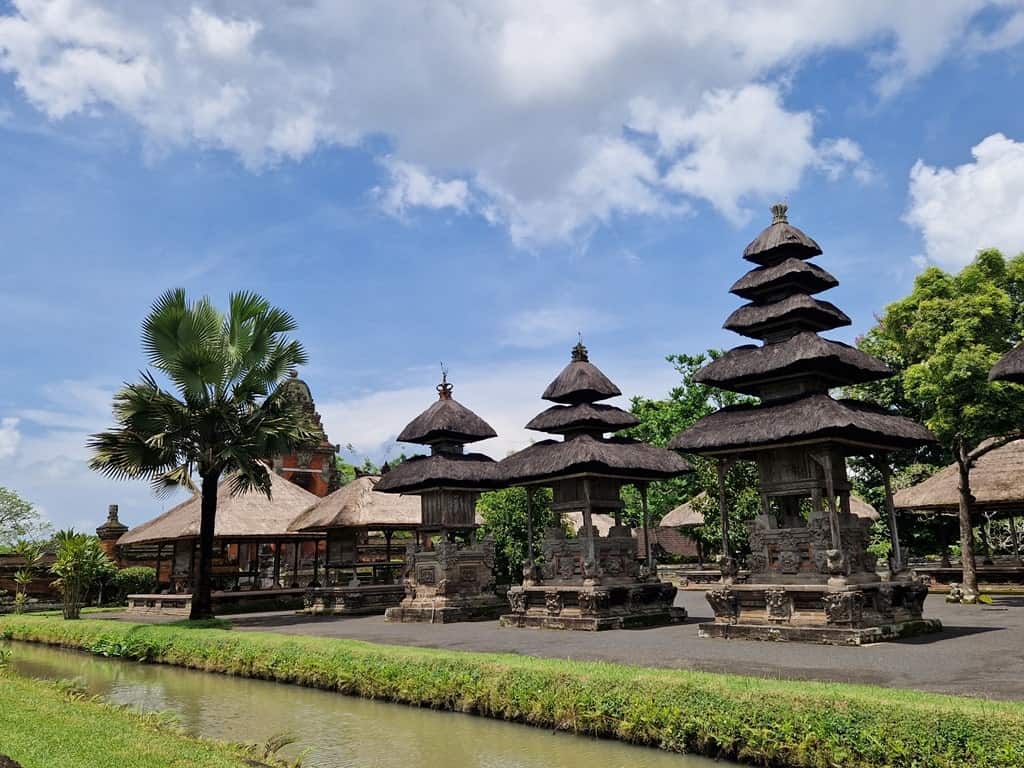For a relaxing place to spend some time in Bali, this UNESCO-recognised royal temple should do the trick. With its beautifully laid-out gardens, ornate carvings, and lotus-filled ponds, Pura Taman Ayun mixes history, culture, and design for a masterclass in Balinese aesthetics. There’s a calm serenity here, helped immensely by how lesser trodden it is by tourists compared to other religious sites like Uluwatu or Pura Tirta Empul.
Table of Contents
Visiting the Pura Taman Ayun Temple
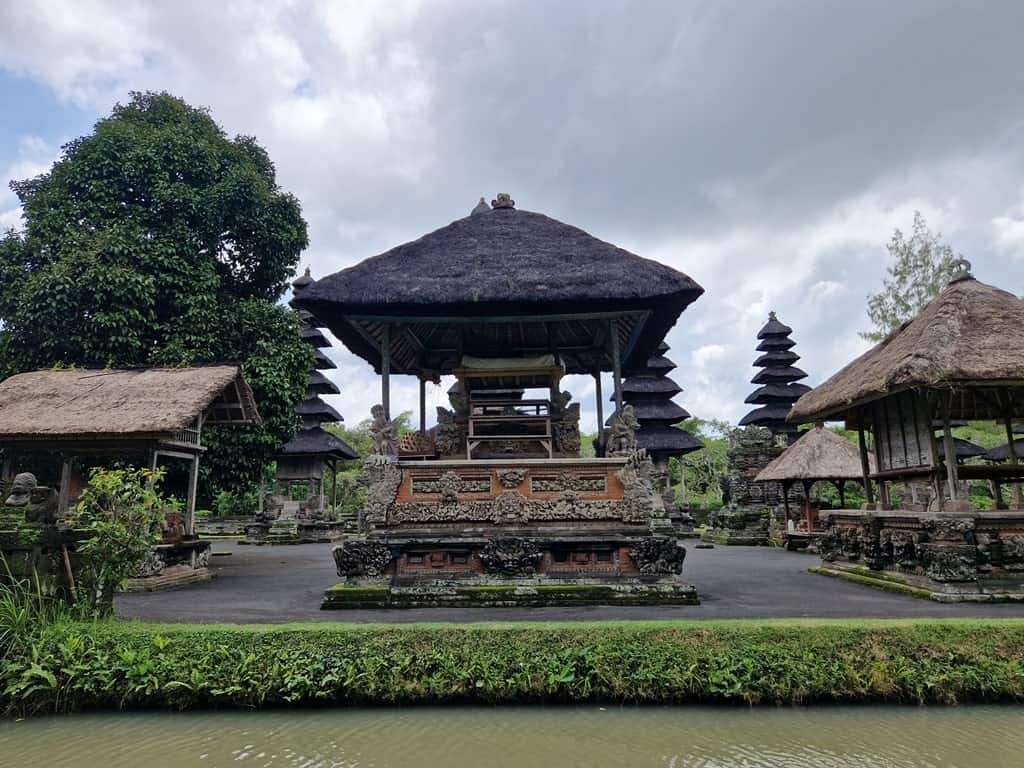
History and features of Pura Taman Ayun Temple in Bali
Taman Ayun literally means “Beautiful Garden” and it’s easy to see how this temple got its name. Dating back to 1634, the temple was commissioned by I Gusti Agung Putu, the first ruler and founder of the Mengwi Kingdom. It’s often called Mengwi Royal Temple, due to its location in Mengwi itself, the capital of the former kingdom.
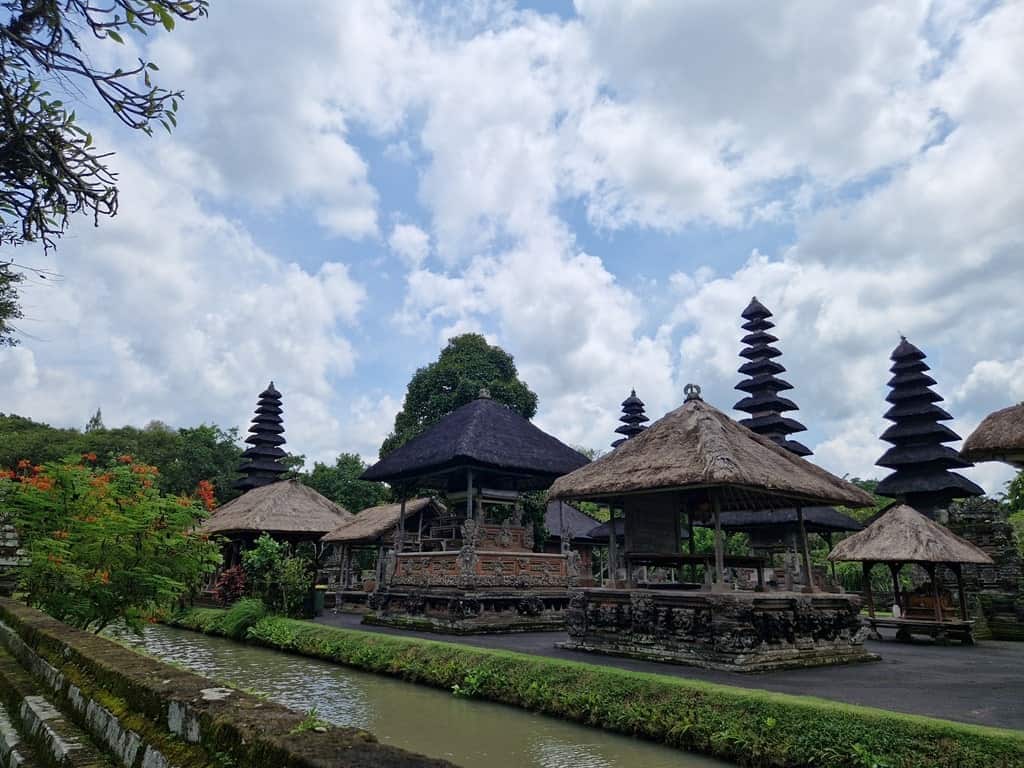
Created as a paibon (or “mother temple”) for ancestors of the Mengwi kings, it is one of Bali’s temples that can be classified as a pura kawiten (family temple). Its general purpose was for the king and his subjects to pray for the welfare, protection, and fertility of the Mengwi kingdom. Subjects would come here to take part in important religious ceremonies, listen to teachings, come for purification, and attend festivals.
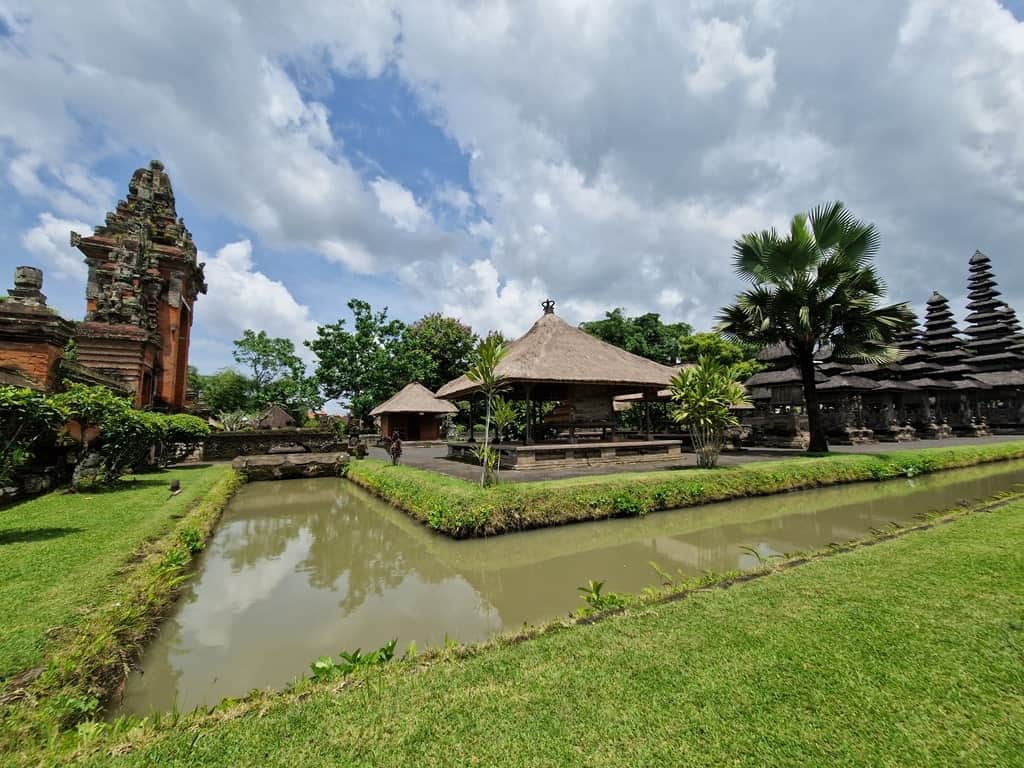
The fortunes of Pura Taman Ayun went up and down with those of the Mengwi royalty themselves, who were often at war or under threat of invasion. For example, the tenth Mengwi king died during a battle with the Badung Kingdom, and the whole family retreated east of their kingdom. In 1911, the royal family returned to the temple and it was restored to its former glory.
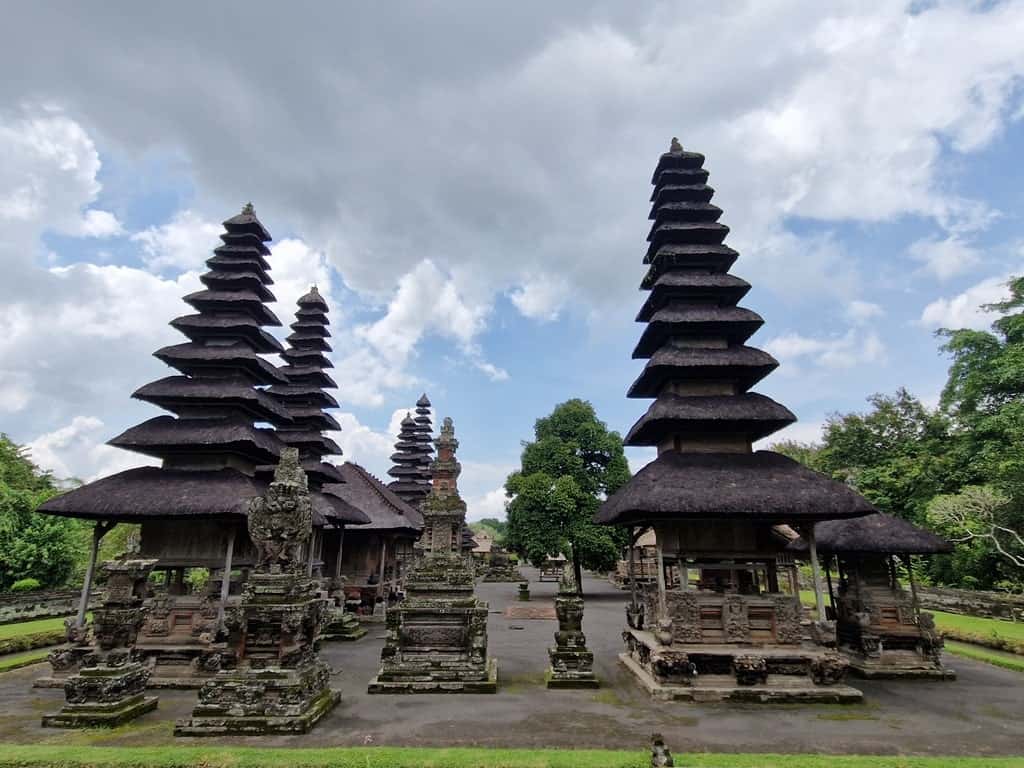
Sadly on January 20th, 1971, an earthquake struck the island and a number of important buildings in the temple complex were badly damaged, with some collapsing. Further restoration work has been carried out in recent years, making not just the temple complex but also its gardens particularly picturesque.
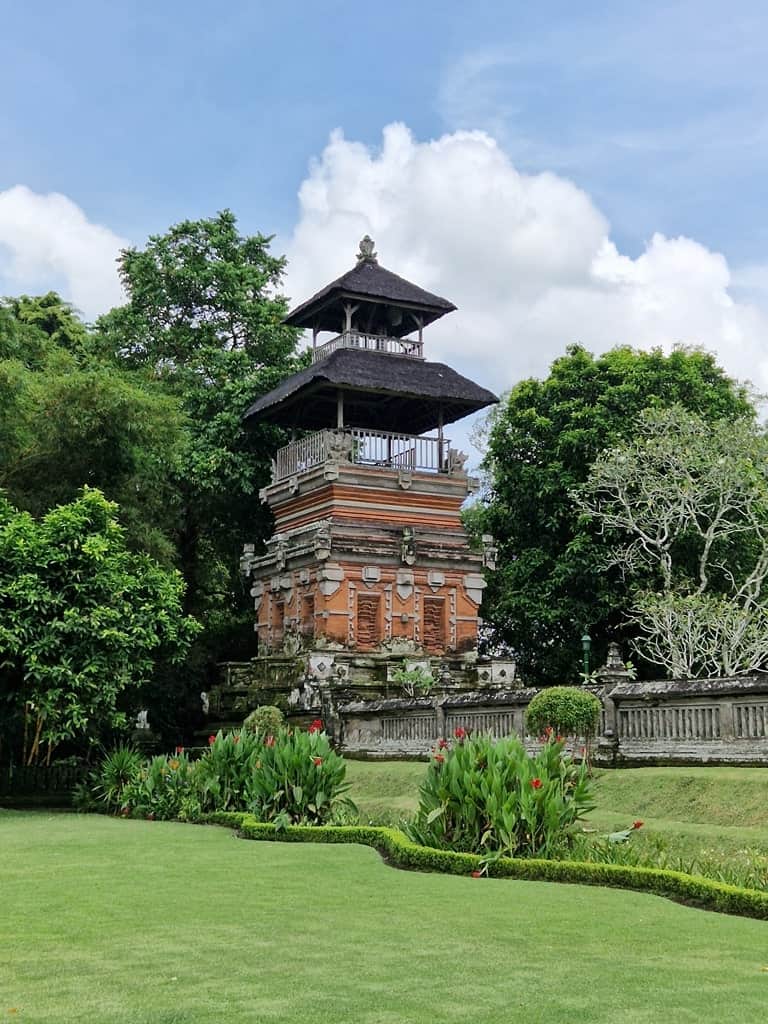
In 2012, the temple was inscribed by UNESCO as part of the subak irrigation system, and a few years later was included in the BBC’s documentary series Around the World in 80 Gardens, in which its lush gardens took center stage.
What to see and do at Pura Taman Ayun
The outer courtyard
Known in Balinese as a jaba sisi, this outer courtyard surrounds the inner parts of the temple complex. Here a bridge connects the two parts of the temple — the outer and the inner — which leads over a perfectly sculpted canal.
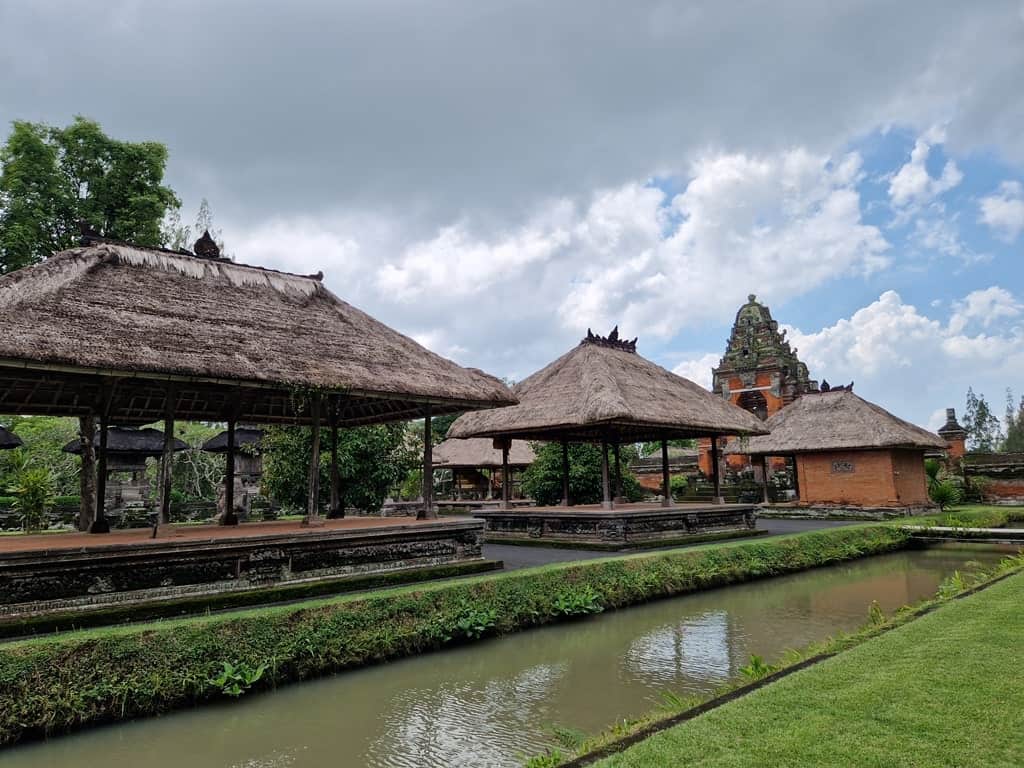
On each side of the bridge, a guardian statue aims to stop any negative influence from entering into the temple grounds. At the far side of the bridge, at the entrance to the first inner courtyard, lies the candi bentar or split gateway.
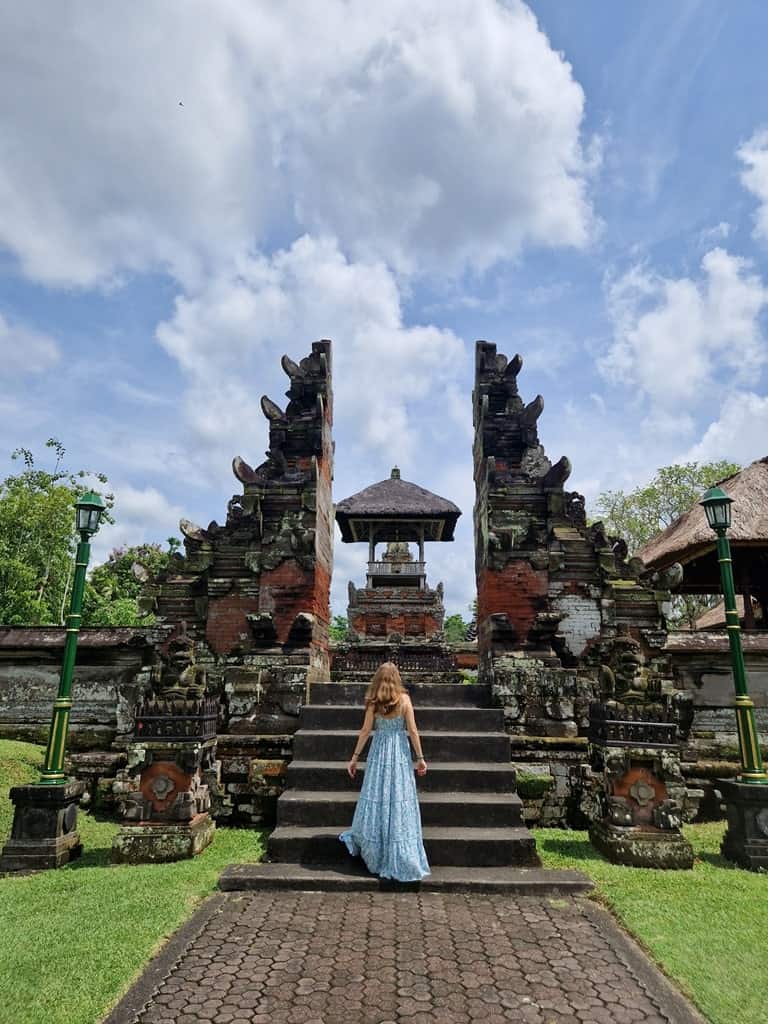
First inner courtyard and wantilan
This portion of Pura Taman Ayun is where you’ll find the wantilan, a pavilion that is used for cock fighting ceremonies during purification rituals. With its multi-tiered roof, these community spaces are usually found in villages outside of religious spaces. However since the 1980s, there has been a ban on cock fighting across the country, as it is seen as gambling, but this does not include fights at the temple’s wantilan.
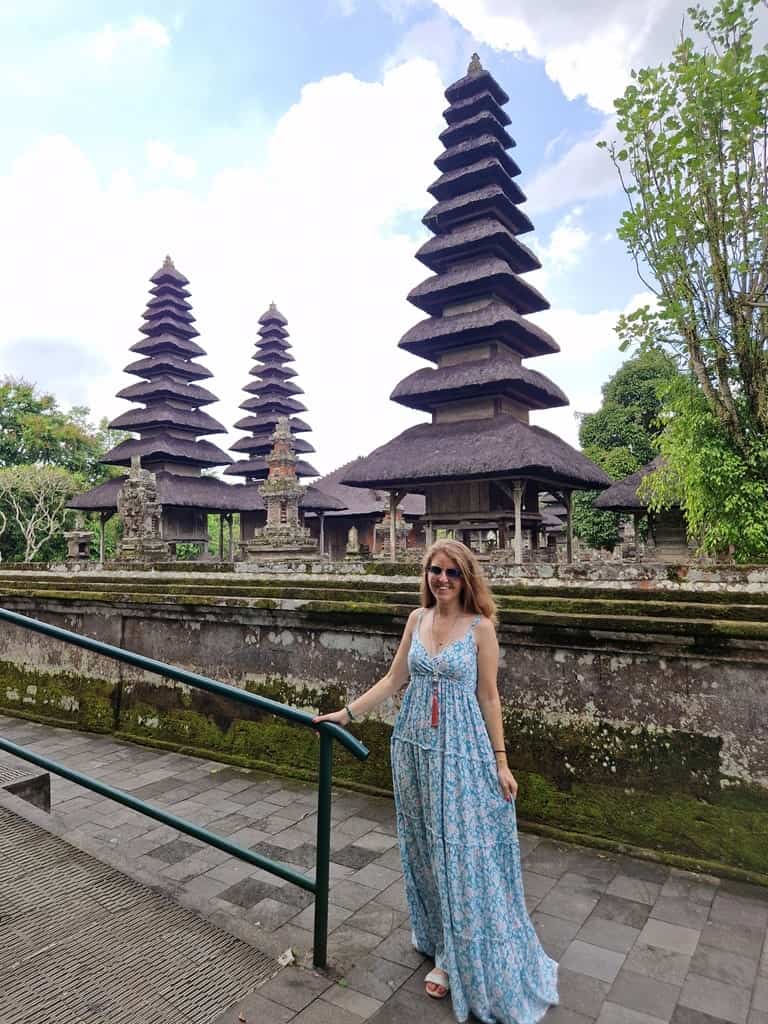
In this part of the temple, there’s also a path that leads to the gate to the second inner courtyard. You’ll also find the bale bengong, a pavilion for relaxing and contemplating the surrounding natural scenery — including a peaceful pond filled with water lilies.
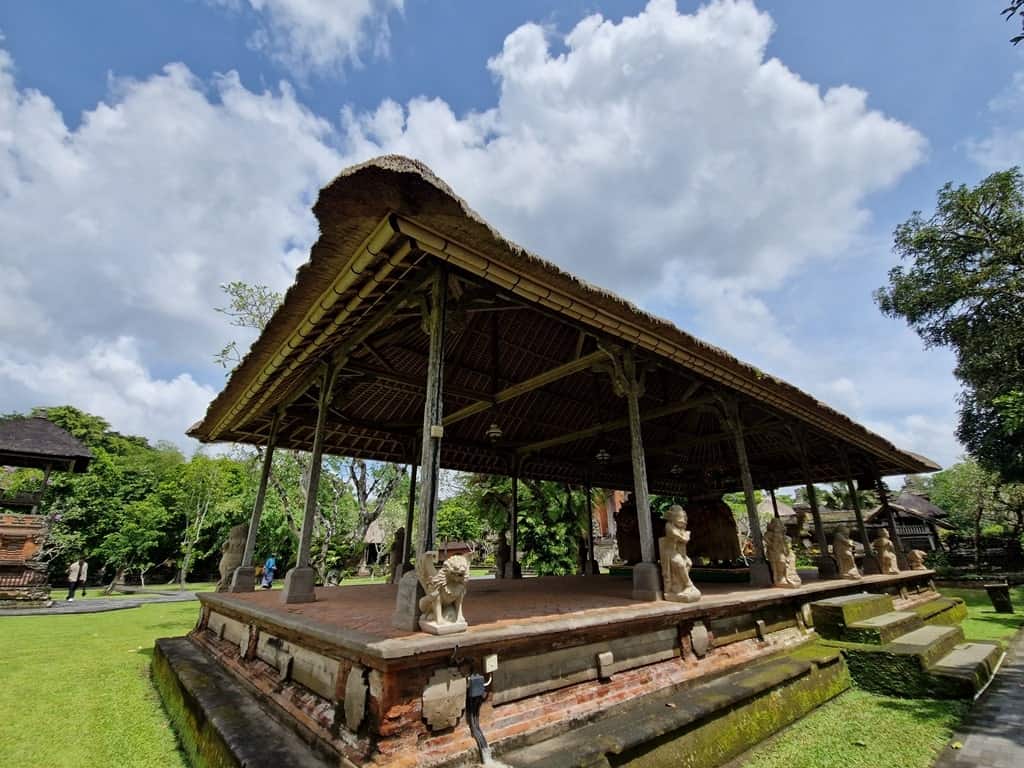
Second inner courtyard
Enter through the second gateway and you’ll be in the second inner courtyard, it’s more sacred than the last. In this compound, there are richly decorated sculptural reliefs that illustrate the Dewata Nawa Sanga (guardian deities of the nine directions).
The second inner courtyard is also home to the smaller temple of Pura Dalem Bekak, as well as the tall bale kulkul, or drum tower. At eight meters tall, this wooden structure affords great views out over the temple complex and plays host to rectangular wooden bells.
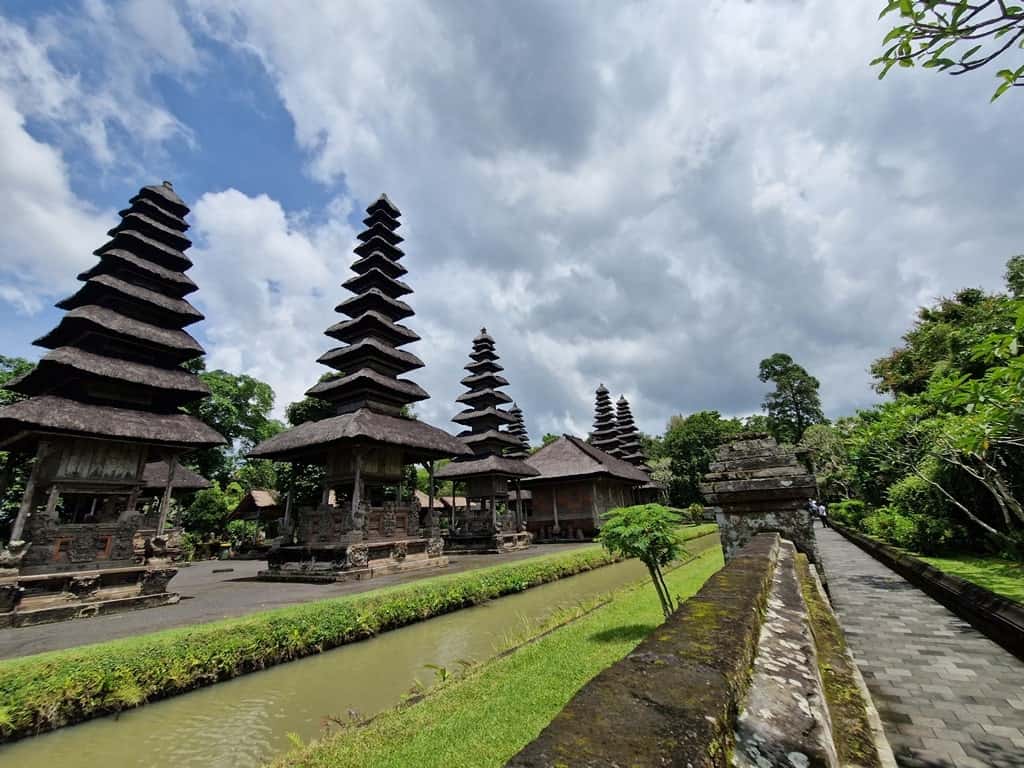
The entrance to the most sacred inner sanctum of the temple can be seen in the second courtyard. Though you cannot pass through it, the ornate gate is a highlight, with its beautifully carved stone sculptures mixing with brick architecture.
Inner sanctum
The gates to the inner sanctum are usually closed. They’ll only be open during important religious ceremonies. Inside are a number of meru (thatched pagodas), as well as the main temple, each rising in height.
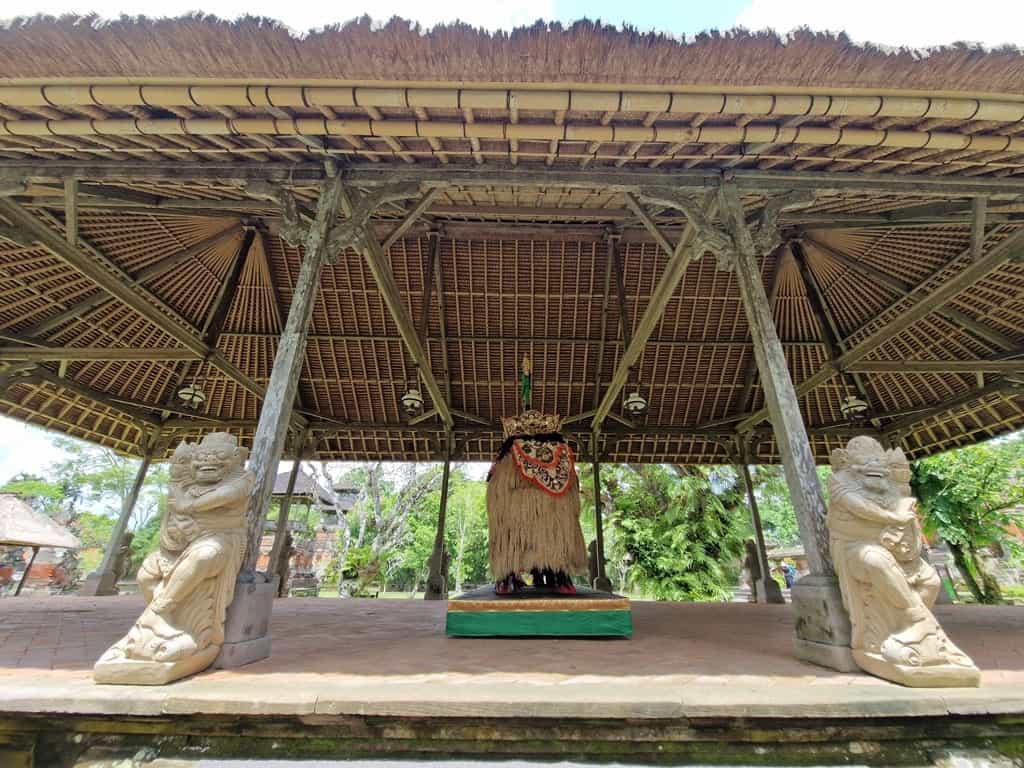
Practical information for visiting Pura Taman Ayun temple in Bali
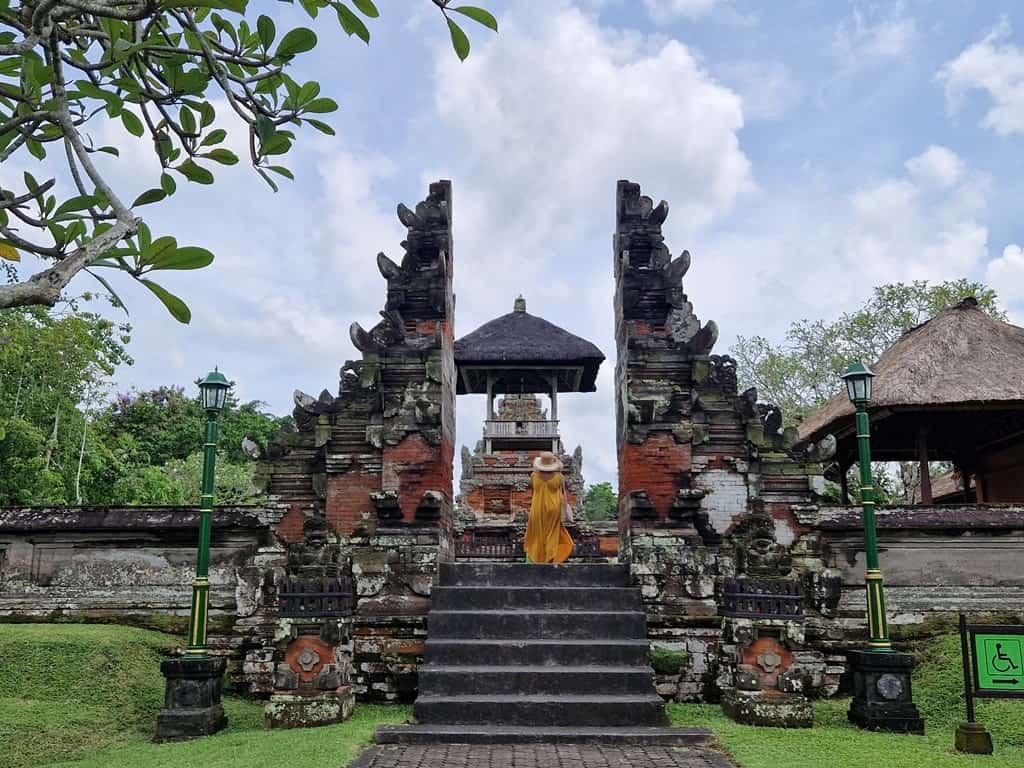
What to wear at the Pura Taman Ayun temple
It is important to dress in a respectful manner when visiting the Pura Taman Ayun temple. This means having your shoulders and upper arms covered, as well as your legs and midriff. Most Balinese temples can provide visitors who are not appropriately dressed in a sarong, which you can rent. This usually costs around 5,000 RP, but can also sometimes be included in the cost of the entrance fee.
Where is Pura Taman Ayun temple (and how to get there)
Pura Taman Ayun is located along Jalan Ayodya in Mengwi, Badung. It’s around 17 kilometers away from Denpasar (around 40 minutes by road), but if you’re traveling from Ubud it will take around half an hour to 45 minutes to drive there.
Many people choose to drive themselves, either by car or motorbike (there’s plenty of parking available onsite). However, taxis are a reliable way to get there, as are private drivers, who you’ll usually hire for the day.
There are also multiple options for tours that can take you from wherever you’re staying on the island. These will take you to a number of other top sights as well as a visit to Pura Taman Ayun.
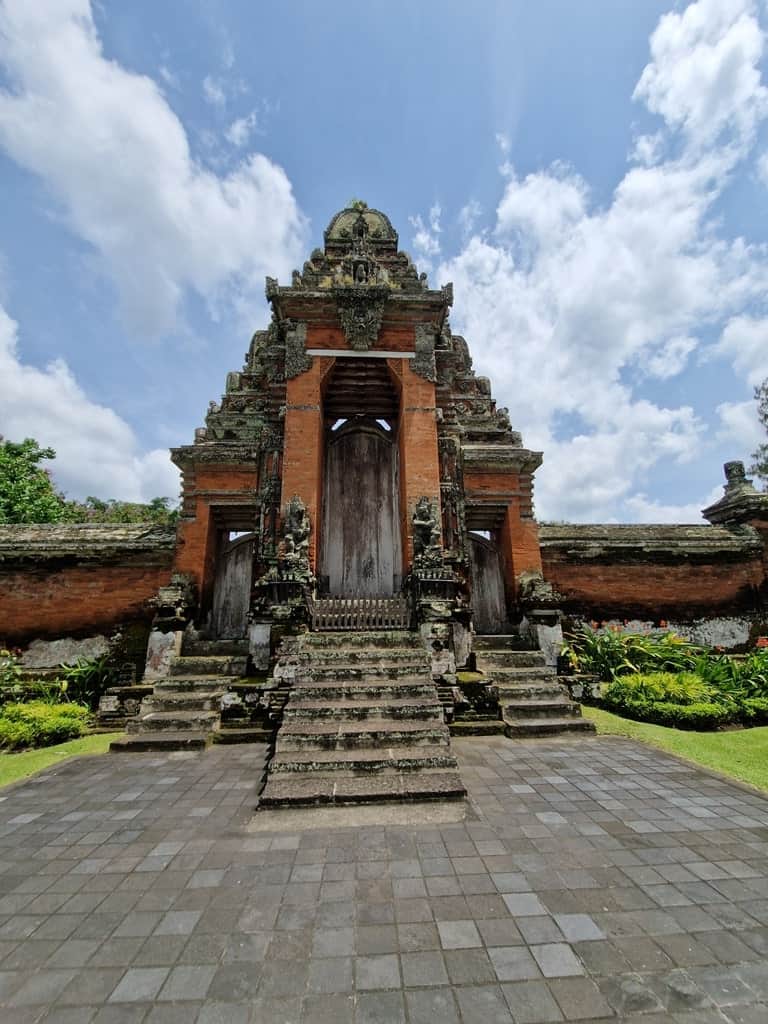
Opening times of the Pura Taman Ayun temple
Pura Taman Ayun is open from 8 a.m. to 6:15 p.m. every day.
Entrance Fees for the Pura Taman Ayun temple
The entrance fee for Pura Taman Ayun is 30,000 RP for adults and 15,000 RP for children.

